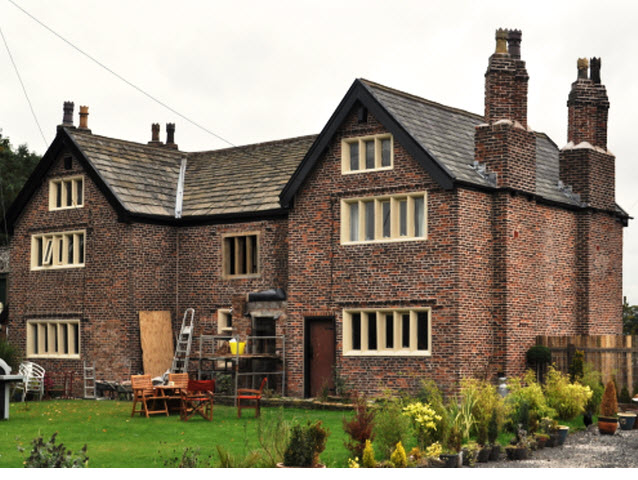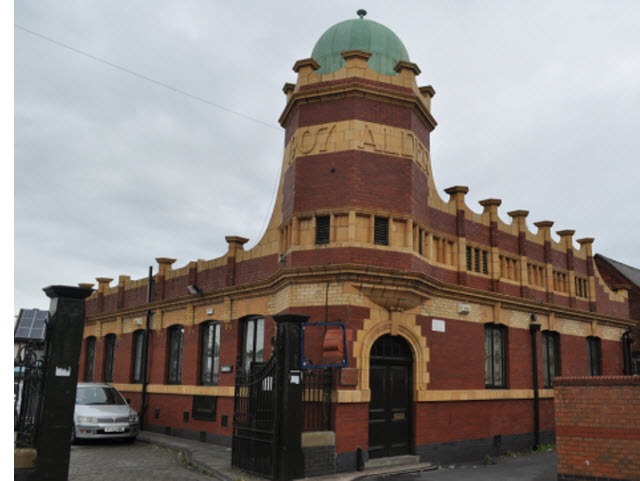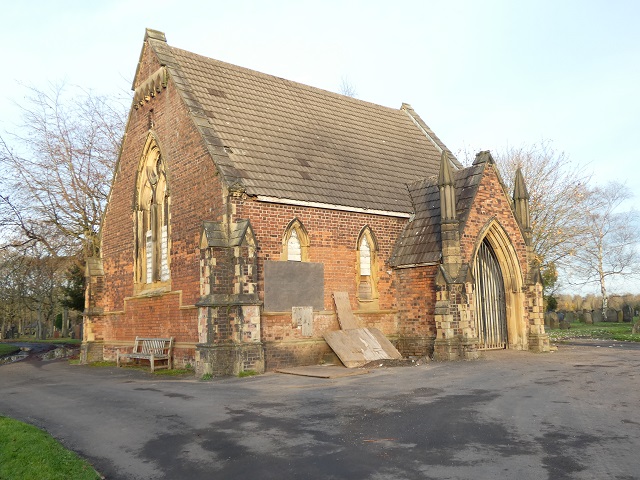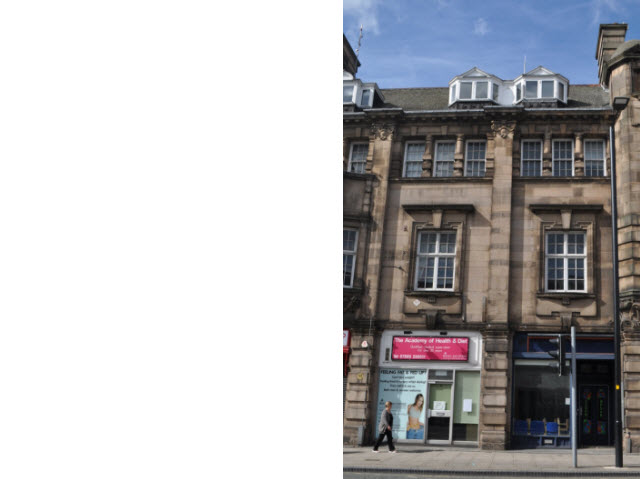Bedford Hall
Hooten Lane, Leigh
Description
A late medieval farmhouse modified and now converted into two two-storey houses with attics, architect unknown. Oct 2015 - undergoing renovation.
HISTORY: Bedford Hall is of medieval origins and appears to have consisted of a central open hall with a solar wing at the upper or south west end and a lower wing at the north east end. It is one of a significant group of medieval halls on the rural hinterland of Leigh including the nearby Sandy Pool Farm, Hopecarr Hall (now demolished), and Peel Hall at Ince, Morley's Hall at Astley and Kirklees Hall at Aspull. About c1600 Bedford Hall appears to have been substantially rebuilt and modernised: a ceiling was inserted into the open hall to create a chamber above and the lower wing was demolished and replaced by a new, smaller lower wing. A further modernisation took place in the mid-C17 with the replacement of the timber-framing by brickwork and the insertion of brick mullioned windows plastered to give the impression of stone. By 1928 the hall had been divided to form two separate dwellings with the north east range and central ranges forming the larger dwelling and the south west range the smaller. Separate doors were provided in each of the wings and separate staircases were fitted, thus making redundant an earlier rear stair turret. Rear porches and a single-storey addition to the left return were also added during the C20.
SOURCES: Garry Miller, Bedford Hall: Historic Building Report, 2009. Garry Miller, Historic Houses in Lancashire, The Douglas Valley, 1300-1770, 2002.
_________________________________________________________________________.
It seems likely that this was originally the home of the lord of the manor of Bedford. However, the manor had been divided up by 1291 when Bedford Hall is first recorded. This and the non-residence of the owners at the hall for several hundred years meant that the hall's role in the history of Bedford was a relatively minor one.
William de la Doune was the tenant in 1303 when he was taken to court by his landlord for felling 300 oak trees in Bedford Wood. His defence was that he had used the timber to rebuild the hall which had been ruinous.
The Lathom family had acquired Bedford Hall by 1587 and chose to live there themselves. The family were staunch Catholics and in 1633 Elizabeth Lathom was in trouble for “harbouring one Barlowe, who is famed to be a popish priest and manie people to meet there on Sondaies and holidaies.” Barlow was to be captured at Morleys in Astley in 1641 and executed; he is better known today as St. Ambrose Barlow. Jane Lathom, last of the line, sold the estate to settle her husband's debts in 1719, since when there has been a variety of owners and tenants.
The present hall, which replaced several others on the same site, dates from the early 1700's. The hand-made bricks and the local lime mortar are similar to those used at nearby Sandypool. Although much development has taken place around it, the Hall itself is in splendid condition and has been thoughtfully refurbished inside in recent years.
Source: Leigh History Society




